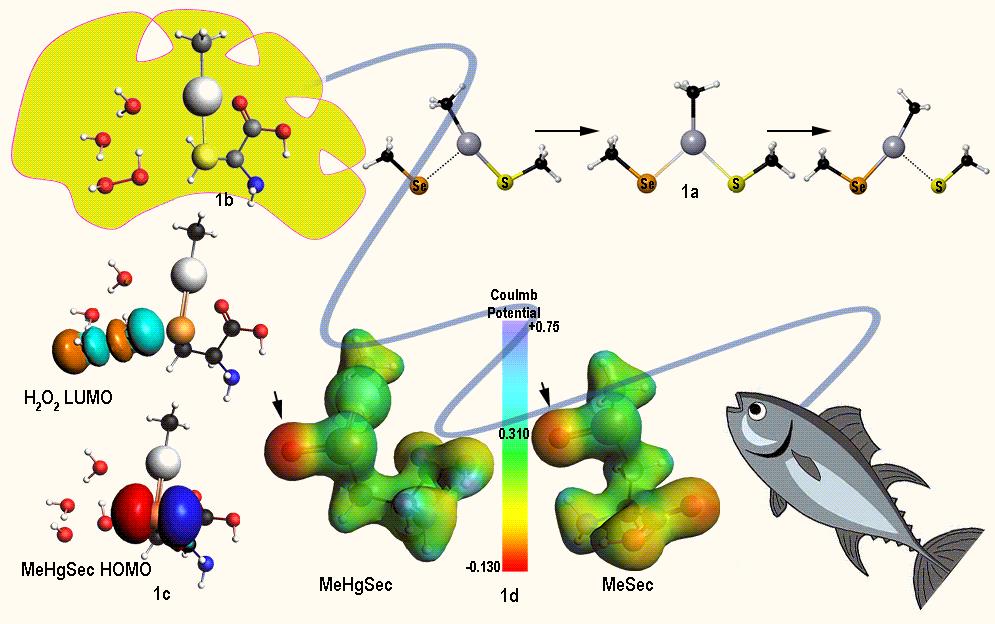Investigating the mechanisms for methylmercury poisoning
Methylmercury is an electrophilic toxicant present in the list of the ten most chemicals of major public health concern substances provided by the WHO. Its capacity of binding to biologically relevant thiols and selenols, disrupting their functions, is recognized as the molecular basis of its toxicity. However, the experimental atomistic investigation, e.g. by means of X-ray crystallography, is cumbersome. With a relativistic density functional theory approach with ADF and AMS, researchers from the Università degli Studi di Padova (Italy) and Universidade Federal de Santa Maria (Brazil) investigated methylmercury chemistry in three different steps which mimic its interaction and reactivity with thio- and selenoproteins.
1) The binding step was modeled as a ligand exchange reaction (Figure 1a), in which the target selenolate attacks the metal center leading to the displacement of the carrier thiolate. Energy Decomposition Analysis showed that the ligand exchange was essentially an almost-diffusive, SN2@Hg reaction.
2) The capacity of the chalcogen nucleus to reduce peroxides after methylmercury binding was investigated by means of solvent-assisted proton-exchange models, leading to the understanding that methylmercury chalcogenolates reduce peroxides with rates in-between those of fully protonated and fully deprotonated chalcogenolates, producing the correspondent chalcogenoxides (Figure 1b and 1c).
3) Lastly, the mechanistic hypothesis of Se-C bond breaking promoted by the metal binding was investigated, and the capacity of the metal to move the charge towards the oxygen of the selenoxide was found to promote a β-elimination reaction with concomitant Se-C bond breaking, thus leading to the irreversible inhibition of the target selenoproteins (Figure 1d).

Madabeni, A., Dalla Tiezza, M., Omage, F. B., Nogara, P. A., Bortoli, M., Rocha, J. B. T., and Orian, L. Chalcogen-Mercury Bond Formation and Disruption in Model Rabenstein’s Reactions: A Computational Analysis. J. Comput. Chem., 2020, 41, 2045−2054.
Madabeni, A., Nogara, P. A., Bortoli, M., Rocha, J. B. T., and Orian, L. Effect of Methylmercury Binding on the Peroxide Reducing Potential of Cysteine and Selenocysteine. Inorg. Chem., 2021, 60, 4646-4656.
Nogara, P.A., Madabeni, A., Bortoli, M., Rocha, J.B.T., and Orian, L. Methylmercury Can Facilitate the Formation of Dehydroalanine in Selenoenzymes: Insight from DFT Molecular Modelling, Chem. Res. Toxicol., 2021, accepted manuscript (DOI: 10.1021/acs.chemrestox.1c00073)